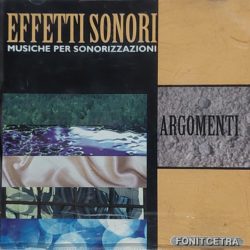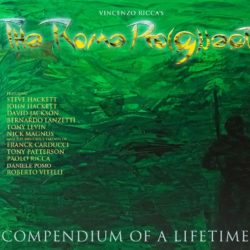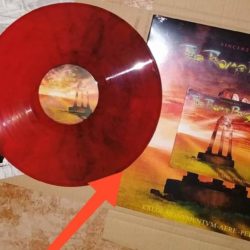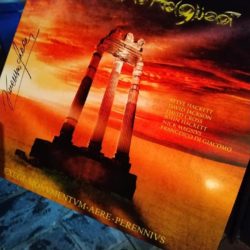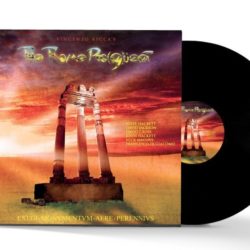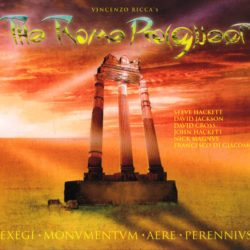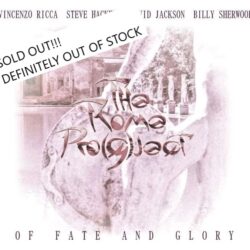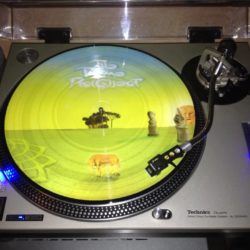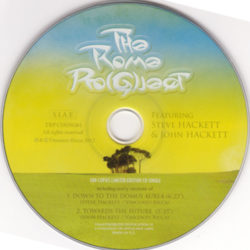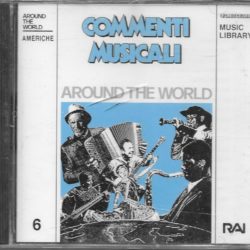Eric Clapton was the opening act of his own Crossroads Guitar Festival on April 12. He took the stage at New York’s Madison Square Garden just before the official starting time of 7:30, as if he couldn’t wait to get the night going. Seated with an acoustic guitar, dressed in shades of gray and wearing glasses, Clapton performed a short set with his current touring band, starting with an earthy stroll through Charles Brown’s “Drifting Blues.” He also set the tone for the next ten hours, spread across the 12th and 13th, by giving generous spotlight and solo time to his initial guests: singer-guitarist and ex-Clapton sideman Andy Fairweather-Low and country picker Vince Gill.
It was a characteristic gesture for Clapton, one of rock’s most self-effacing guitar heroes, and Crossroads itself, which featured sets and guest shots by more than two dozen other guitarists including Jeff Beck, B.B. King, Buddy Guy, John Mayer, Keb’ Mo, Sonny Landreth, Albert Lee, Robert Cray, Steve Cropper, Robbie Robertson and rising star Gary Clark Jr. Clapton, 68, is the founder and supervising spirit of the festival, which benefits his Caribbean addiction-treatment facillity of the same name and was held indoors for its fourth edition, after single-day outdoor extravaganzas in Dallas in 2004 and Chicago in 2007 and 2010.
Clapton is also Crossroads’ inevitable headliner. He closed on the 13th, this time on electric guitar and with a surprise guest, Keith Richards of the Rolling Stones. The latter looked fit and soloed with short, tart phrases in the Big Bill Broonzy-Little Walter chestnut “Key to the Highway” and the 1958 Chuck Berry B-side “Sweet Little Rock and Roller.” Richards also took a moment to honor Clapton, with good rude humor, for doing “such a beautiful job” with this shindig. “So let’s give him the clap!” Richards said with a hoarse laugh, putting his hands together.
Blues and Fraternity
But Clapton mostly curates and attends each Crossroads as a student, fan and genially competitive friend. On the first night at the Garden, after that acoustic set, Clapton came back out to swap breaks and smiles in a variety of settings: with the Allman Brothers Band; the jazz guitarist Kurt Rosenwinkel; and a formidable row of bluesmen, including Cray, King and Jimmie Vaughan. The emphasis in that gang, all seated out of respect for the 87-year-old King, was on fraternity. “If you give them a big hand,” King told the audience, gesturing to the others, “you make me feel good.” In fact, although he played only intermittent guitar, King held up his vocal share of “Sweet Sixteen” and “Everyday I Have the Blues” like an undiminished lion. And when it was Clapton’s turn to solo in the latter, he turned up his heat as if called on in class by a master teacher.
In his two songs with Rosenwinkle, Clapton demonstrated why he is – appropriately for such a reluctant star – still one of rock’s busiest session guitarists and live sidemen: his ability to elevate another’s starring moment with blending fluency. The up-tempo shuffle “Way Down That Lonesome Road” was closer to Clapton’s usual stride, and he answered Rosenwinkel’s rounded-treble be-bop charge with a slicing flair in his straight-blues runs. But in the ballad “If I Should Lose You,” Clapton soloed with the right supporting distance in tone and ego, complementing Rosenwinkel’s fluid poise with dextrous, understated melancholy.
Later, with the Allmans, Clapton did it again in the Derek and the Dominos rush of “Why Does Love Got to Be So Bad.” He and guitarists Warren Haynes and Derek Trucks all soloed in the song’s long, closing sigh, their strong, individual voices meshing into a glistening, bittersweet tangle in the growing quiet. Read more

